11 Types of Sushi
Sushi is perhaps the most popular dish in Japanese cuisine. It is typically prepared with vinegared medium-grain white rice or brown rice. It also comprises a wide range of seafood like eel, salmon, shrimp, tuna, squid, or crab meat, along with vegetables such as daikon radish, wasabi, and pickled ginger. For those who are not familiar with the different kinds of sushi, here is a guide to help you get started so that you will not be in a fix when visiting a sushi restaurant or bar.
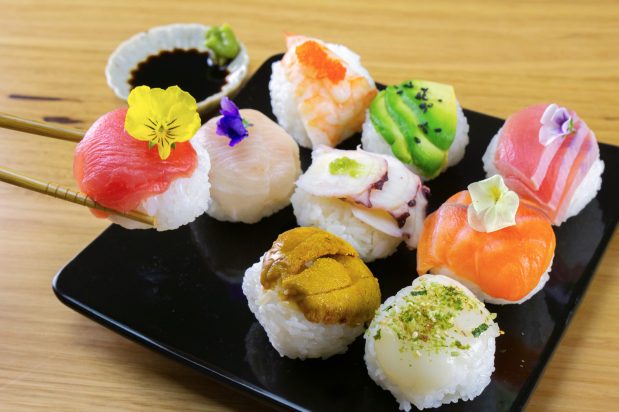
11 Types of Sushi
Table Of Content
|
Main Types of Sushi |
|
|
1. Nigirizushi Hand-pressed sushi, forming oval-shaped mounds with a topping of salmon, tuna, squid, octopus, sea eel, and sweet egg, served with wasabi Examples: Gunkanmaki, Temarizushi |
2. Makizushi Also called makimono or norimaki, it comes in cylindrical pieces prepared with bamboo mats called makisu, usually wrapped in seaweed nori Examples: Futomaki, Tamago, Tempura, Hosomaki, Tekkamaki, Ehomaki, Temaki |
|
3. Chirashizushi Consists of rice placed in a bowl topped with different types of raw fish and served with vegetable garnishes Examples: Sakezushi, Gomokuzushi, Edomae chirashizushi |
4. Inarizushi Pouch or bag-shaped variety usually made of fried tofu or occasionally of thin omelet, and stuffed with sushi rice Examples: Cone sushi |
|
5. Oshizushi A pressed sushi, it is the specialty of Osaka. Compact, block-shaped pieces are created with a wooden mold, while the ingredients are either cured or cooked Examples: Sabazushi or mackerel sushi, Iwakunizushi |
6. Narezushi A classic variety of fermented sushi, comprising skinned fish filled with salt and put in a wooden barrel, it is then weighed down with tsukemono ishi (pickling stone) Examples: Funa-zushi |
In addition to the six types listed above, there are variations of sushi created to suit the Western palate. Categorized as western-style sushi, these are typically found in the Americas, Europe, and Australia. Some popular western-style sushi includes uramakizushi, Norway roll, and American-style makizushi.
List of 11 of the Best Types of Sushi
1. Temaki
It is a large, hand-rolled cone-shaped sushi wrapped in nori with the cooked ingredients spilling out at the wide end. A temaki is usually 10 cm (4 inches) long, and it is eaten with fingers instead of chopsticks. It should be eaten soon after being made; otherwise, the cone absorbs the moisture content from the filling, and the sushi loses its crispness.
Type: Makizushi
Ingredients: Cooked sushi rice, fish (optional) such as salmon, tuna, or flying fish roe; crab meat (optional), veggies like daikon radish, sprouts, avocado, carrot, cucumber, pea shoots, or bell pepper; soy sauce, lemon juice, wasabi, rice wine vinegar
2. Tempura Rolls
A familiar item at sushi restaurants, the tempura roll, is deep-fried makizushi with either vegetables or fish inside. It is prepared by frying the veggies or fish in a light batter consisting of flour, eggs, and water. The shrimp tempura roll is arguably the most popular one.
Type: Makizushi
Ingredients: Sushi rice, fish such as salmon, black tiger shrimp, or tempura shrimp, and crab meat (optional); vegetables like asparagus, cucumber, green onions, sweet potato, or avocado
3. Uramaki
Also known as the inside-out roll, it has nori on the inside and rice on the outside. The uramaki is medium-sized sushi, comprising two or more fillings out of which the inner one is surrounded by nori. Then comes a coating of rice, and finally, an outer layer of other ingredients like sesame seeds or roe is applied.
Type: Western-style Sushi
Ingredients: Sushi rice, filling contains tuna, crab meat, mayonnaise, cucumber, avocado, or carrots, and an optional coating made with cooked sesame seeds or roe
4. Gunkanmaki
The gunkanmaki or warship roll is an oval-shaped nigirizushi. It has nori wrapped around a hand-formed clump of rice, which forms a vessel that is stuffed with soft, finely chopped ingredients.
Type: Nigirizushi
Ingredients: Topping consists of salmon roe, sea urchin, or salted herring roe; the stuffing includes natto, sea urchin roe, scallops, oysters, quail eggs, and corn with mayonnaise
5. Hosomaki
These are skinny-shaped makizushi, and the method by which they are cut or served varies based on the ingredients. Kanpyo-maki, for example, is rolled into a round shape and cut into four pieces and then served on its side. Kappa-maki and Tekka-maki are both turned into square shapes and cut into six pieces. Then these are served vertically so that the green and red colors at the ends are visible.
Type: Makizushi
Ingredients: Sushi rice, fish such as tuna, salmon, or smelt, served with soy sauce, wasabi, rice wine vinegar, or sesame oil; veggies like seaweed, cucumber, pickled daikon radish, or avocado
6. Temarizushi
Believed to have originated in Tokyo, the temarizushi is prepared by pressing sushi rice along with fish into a small, round shape, which resembles Japanese toy balls. Plastic wraps are used for making these ball-shaped rolls.
Type: Nigirizushi
Ingredients: Either raw or smoked salmon, tuna, shrimp, salmon roe, sea bream, or cod fish flakes; veggies like lotus root or avocado
7. Futomaki
These are thicker than other sushi rolls and are the specialty of the Kansai and Kanto regions. In Kansai, the futomaki is made with one and a half sheets of raw nori, but in Kanto, only one layer of toasted nori is used. The Kansai-variety of futomaki consists of more vinegared rice and is thicker as compared to the Kanto-variation, which contains a balanced mix of vinegared rice and other ingredients and is thus thinner.
Type: Makizushi
Ingredients: Sushi rice, fish like boiled shrimp, smoked salmon, or cod fish flakes, and veggies like daikon radish or avocado
8. Cone Sushi
The cone sushi is a popular sushi variant that originated in Hawaii. It includes rice along with fresh vegetable filling wrapped in a piece of abura-age (deep-fried, thin slices of tofu). It is typically sold as a part of packaged meal boxes.
Type: Inarizushi
Ingredients: Sushi rice, veggies like gobo, carrots, green beans
9. Sabazushi
Served either raw or pickled, the Sabazushi is a famous variety believed to have originated from the 19th century Edomae sushi. It has a strong flavor and can be a little sour since the mackerel is marinated in vinegar.
Type: Oshizushi
Ingredients: Fresh mackerel, sushi rice, sugar, rice vinegar, daikon radish, green beans, pickled ginger
10. Gomokuzushi
It is usually prepared at home and is served on special house parties, family reunions, birthdays, and other celebrations. It contains a mix of cooked and raw ingredients, including fish.
Type: Chirashizushi
Ingredients: Sushi rice, fish like shrimp or salmon roe, chicken, mushroom, carrot, burdock root, sugar, rice vinegar, salt
11. Funazushi
It is a rare variety of narezushi produced near Lake Biwa in the Shiga Prefecture. The dish has been prepared by the members of the Kitamura family since the 17th century.
Type: Narezushi
Ingredients: Fermented goldfish, rice, salt, vinegar
Nowadays, sushi is not just sold in restaurants, bars, and specialty eateries but also in supermarkets and local homes as ready-to-eat meals. Indulging in sushi is a unique experience when you are in Japan, given the variety of seasonal seafood, vegetables, and local rice that you may not commonly find overseas.
- by Joydeep Ghosh
- July 17th 2020

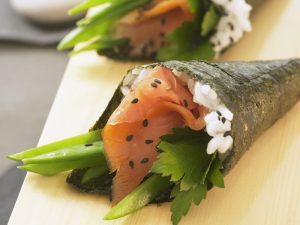
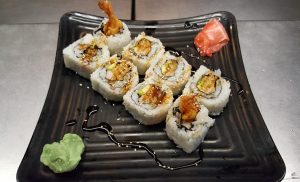
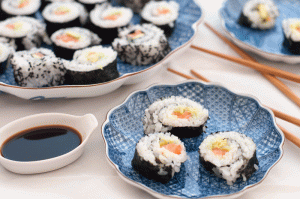
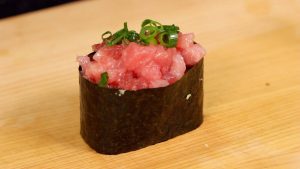
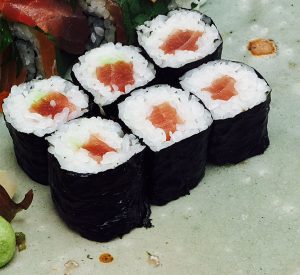
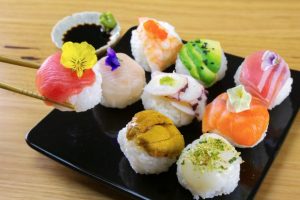
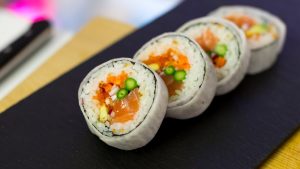
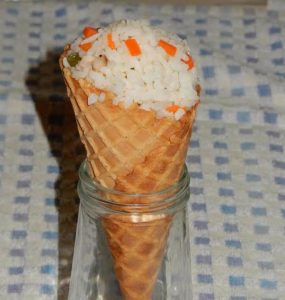
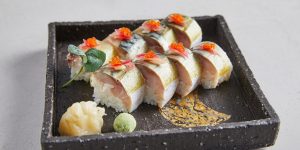
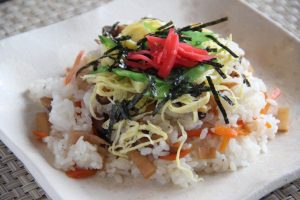
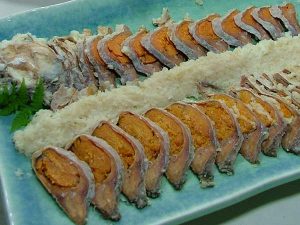
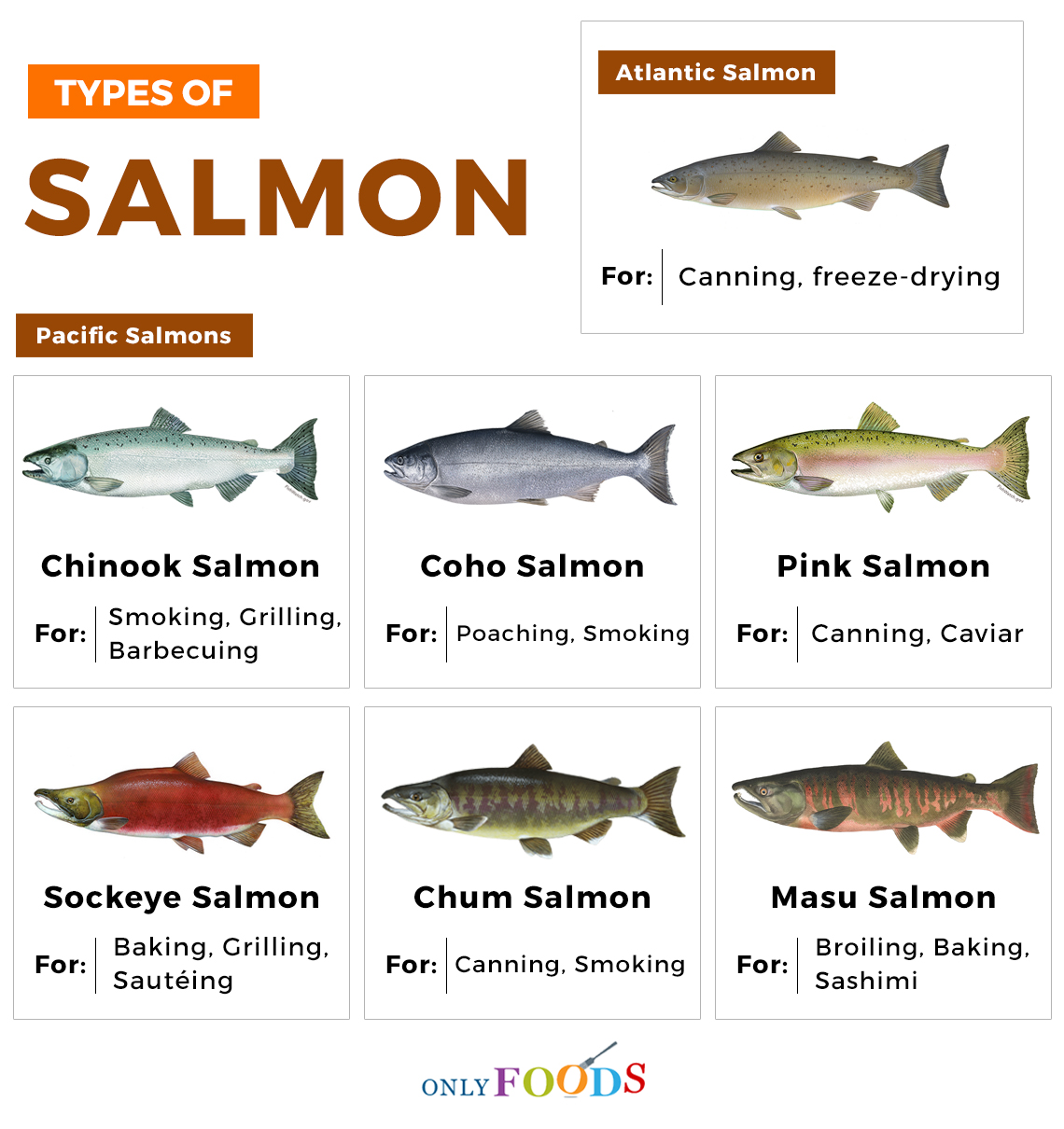

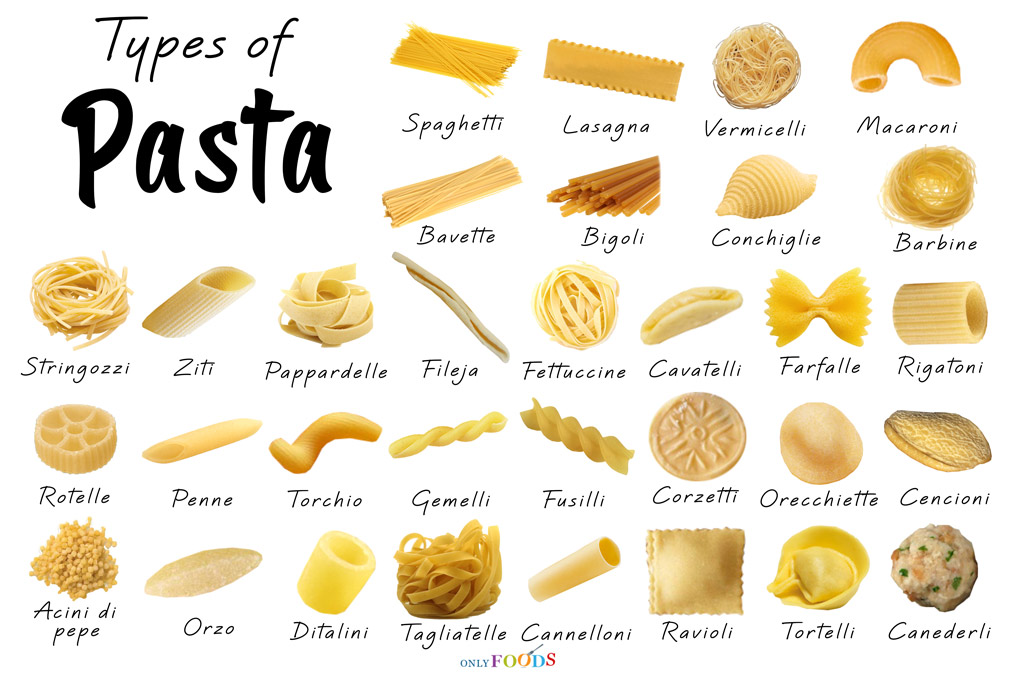















Leave a Reply